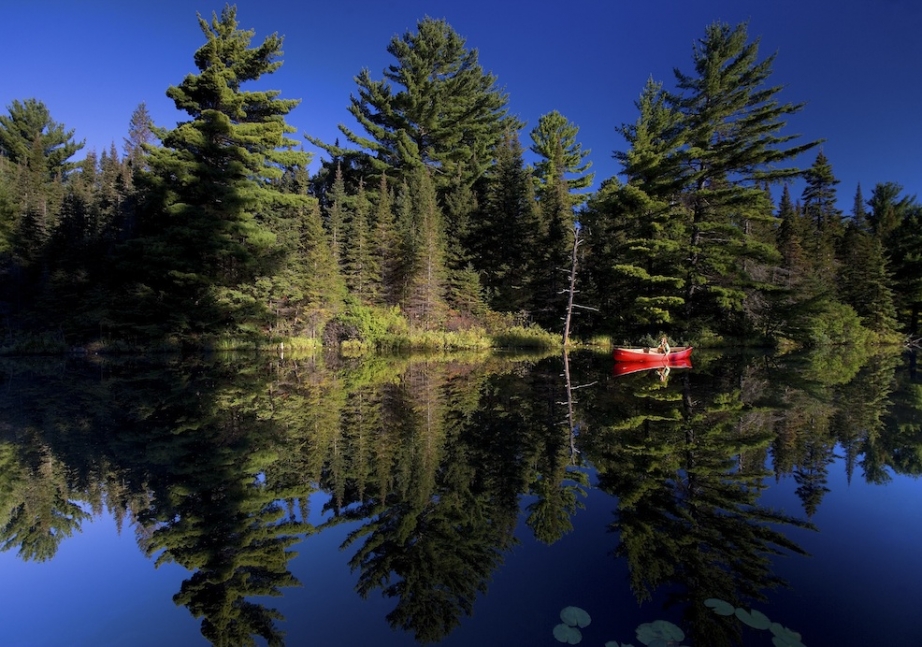
How To Paddle Your Canoe Silently
Gain quick, silent passage with this easy variation on the J stroke. Joanie McGuffin will show you how.
Some might call this the Indian stroke or a palm roll in-water return.

A creative and apt phrase.Hit and switch or double blade semaphore action
I still have to think about it quite a bit. And it’s something my wrist lets me know about too.it is one of those strokes that I just naturally morph into for slow motion manduvering progress when in farily deep water near shore. It gives you time to inspect what is on land or perhaps to see occasional shallow rocks, snags, or debris just under the surface as you move along. Like any such long practiced stroke it is one that you just "do" without ever having to conciously think much about the mechanics of how you perform it.
It should be easy on your wrists as the paddle rotates with gentle manipulation from the fingertips of your upper hand on the grip and spins freely in your lower hand around the shaft.I still have to think about it quite a bit. And it’s something my wrist lets me know about too.
I have a lot of fun with silent strokes sneaking up on deer at my home lake in Pa. For best results be mindful of which way the wind is blowing and paddle into it. I have also snuck up on a couple of black bears, getting within about twenty feet of one last spring. What I have noticed is that, for deer and bear, is that sometimes they can see and hear you but don't run until they smell you. I don't think they recognize you as human when you are in a canoe and are curious.
It’s the J portion that bugs me after a bit. Maybe I need to involve my shaft hand more instead of relying on my top hand?It should be easy on your wrists as the paddle rotates with gentle manipulation from the fingertips of your upper hand on the grip and spins freely in your lower hand around the shaft.
The beauty of this stroke is that because you rotate the paddle you don't need to do that thumb down maneuver that you do with a J stroke, if that's what's bothering your wrist. Otherwise, after the power portion of the stroke I rotate the paddle 90 degrees so the blade is parallel to the keel and do a pry until I get the desired amount of correction. Your paddle will now be in position to feather forward and do a draw for correction then rotate for the next power stroke.It’s the J portion that bugs me after a bit. Maybe I need to involve my shaft hand more instead of relying on my top hand?
Oh interesting. I’ve been doing the J then slicing forward to grab a C. I’ll get something going that works. Just need more time in boat!The beauty of this stroke is that because you rotate the paddle you don't need to do that thumb down maneuver that you do with a J stroke, if that's what's bothering your wrist. Otherwise, after the power portion of the stroke I rotate the paddle 90 degrees so the blade is parallel to the keel and do a pry until I get the desired amount of correction. Your paddle will now be in position to feather forward and do a draw for correction then rotate for the next power stroke.
So what you were doing probably looked a lot like a very ineffective Canadian. No need to put a C at the end of the Canadian. The directional control portion of the Canadian is achieved not by the push of an Initial "J", but rather by the angle of the blade as it is being sliced horizontally underwater during the recovery. Done properly, no "C" is required for straight line travel.Oh interesting. I’ve been doing the J then slicing forward to grab a C. I’ll get something going that works. Just need more time in boat!
You don't have to do much of a J at all.Oh interesting. I’ve been doing the J then slicing forward to grab a C. I’ll get something going that works. Just need more time in boat!
When I want to go silent I go much slower than the guy doing the Canadian stroke in the above video. I may not have enough momentum to do a bonafide Canadian stroke.
There is a lot of nuance in these strokes that isn’t quite visible in a video, nor does it fully convey in text.
